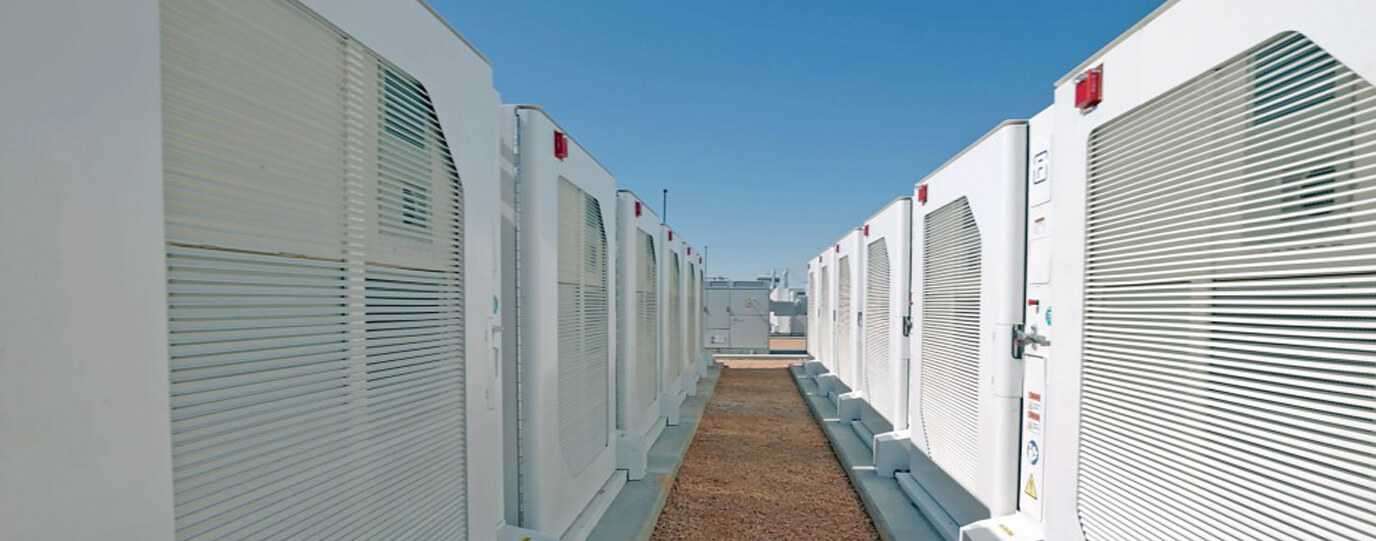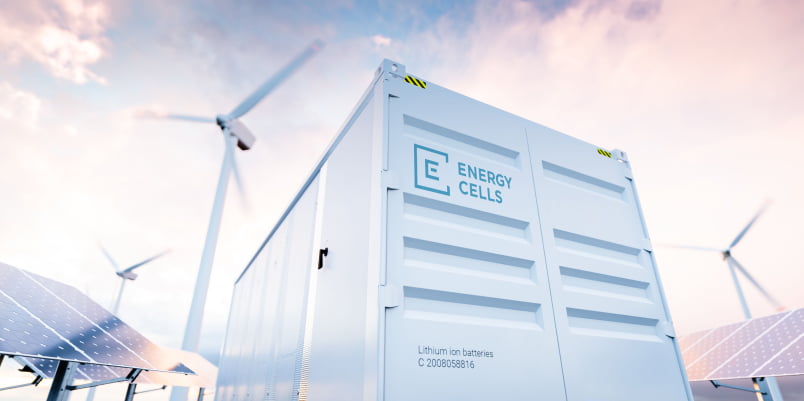About the project
Energy Cells installed and integrated a system of four energy storage batterie parks with a total capacity of 200 megawatts (MW) and 200 megawatt-hours (MWh) into Lithuania’s energy system.
Energy Cells installed four 50 MW and 50 MWh energy storage battery parks at transformer substations in Vilnius, Šiauliai, Alytus, and Utena. It is currently the largest project in the Baltics and one of the largest of its kind in Europe.

Lithuania’s system of electricity storage facilities is vital to ensure the security of Lithuania’s energy system and the possibility to operate in an isolated mode. The energy storage system, which will ensure the operation of the instantaneous isolated electricity reserve for Lithuania before the synchronisation with the continental European networks (CEN), will be used for the integration of energy produced from renewable energy sources after the synchronisation.
The consortium of Siemens Energy and Fluence will install and service the high-capacity energy storage system. On the basis of Joint Activity, the companies implementing the project won an international public tender for the purchase of system installation services and energy storage technologies.
According to the signed €109 million worth contract, Siemens Energy and Fluence will design, manufacture, and connect the energy storage system to the electricity transmission system, as well as provide warranty service for 15 years after the system is switched on.

The most important stages of the project
January of 2021
Energy Cells, a special purpose subsidiary of the EPSO-G Group, was established in January of 2021.
January of 2021
An international tender for the design, manufacture, installation, and technical maintenance services for Lithuania’s battery energy storage system has been announced.
July of 2021
The Government of the Republic of Lithuania has appointed Energy Cells as the operator of storage facilities that will provide Lithuania with an instantaneous electricity reserve.
October of 2021
Energy Cells signed a contract with the winning consortium of Siemens Energy and Fluence.
November of 2021
The start of the design works for the energy storage facilities system.
June of 2022
The start of the energy storage facilities system construction.
Q4 2022
The start of the testing works of the energy storage facilities system.
Q3 2023
Start of providing the services of ensuring the operation in the isolated mode electricity reserve with 50 MW
Q4 2023
Start of providing the services of ensuring the operation in the isolated mode electricity reserve with 200 MW
Energy security
As Lithuania prepares to join the continental European networks (CEN) in 2025 and disconnect from the BRELL ring (Belarus, Russia, Estonia, Latvia and Lithuania), it is important to ensure the operation of the instantaneous electricity reserve and the possibility to operate in isolated mode.
The instantaneous electricity reserve of isolated mode for Lithuania will be ensured by the electricity storage facilities system with the 200 megawatts (MW) and 200 megawatt-hours (MWh) capacity. If needed, the high-capacity reserve storage facilities will start supplying power immediately – within 1 second. This will ensure a reliable supply of active power to the electricity grid until other sources of electricity generation are commenced. Currently, Lithuania’s power plants operating in the IPS/UPS system can start supplying power within 15 minutes.
The energy storage facilities system operator Energy Cells is obliged to provide the services ensuring the operation of the isolated mode electricity system reserve to Lithuania prior to the synchronisation with the continental European networks. Later, energy storage facilities will contribute to the integration of renewable energy.
Renewable energy
After the synchronisation with the continental European networks (CEN), the energy storage facilities system operated by Energy Cells will be able to store and, if necessary, supply electricity generated by solar or wind power plants to the grid. By 2030 Lithuania aims to produce 70% of the country’s energy consumption and almost half of it from renewable energy sources (RES).
As the number of solar and wind farms grows, innovative and flexible energy system management tools are needed. The more RES capacity we have and the more energy we produce, the more solutions are needed to ensure the successful and efficient integration of the energy from RES.
Frequency control
The intermittency of power generated by RES poses challenges for system balancing and frequency management. Energy storage facilities can provide frequency management reserves and, with the help of synthetic inertia, respond to the frequency ramping rate, thus contributing to frequency stability.
System balancing
Energy is produced under the right weather conditions, and this does not always coincide with the actual electricity needs. By storing excess energy in batteries, grid loads can be reduced or adapted to.
The new energy storage facilities will use climate-neutral technologies, which will contribute to the country’s climate change mitigation goals by reducing the need for more polluting electricity sources to operate the transmission system.
Operation and related data
The information will be provided from the start of the energy storage facilities system operation.